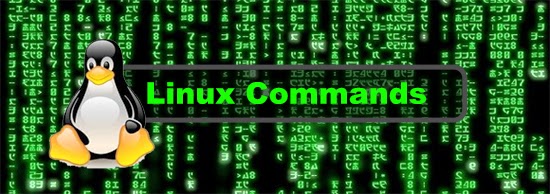Basic Command for Beginner How to Use Linux. This Linux guide will help you understand useful Linux command for Linux terminal. This is little important to speed up your Linux task beside of using GUI through Linux application. To make things even easier, we have color coded this chart: Commands are purple, variables such as command options, flags and user defined files or directories are blue and you will most likely substitute these with your own.
Basic Command for Beginner How to Use Linux
Basic Command for Beginner How to Use Linux
| Command |
Description |
| man command |
Often referred to as the ‘man page’, most commands have a users manual. These manuals list available options, proper usage and general information. We strongly suggest you utilize man and learn more about the command before using it. |
Linux Command for Navigation & Directories
| Command |
Description |
| ls |
Lists the contents of the directory. |
| pwd |
Display the name of the directory you’re currently in. |
| cd .. |
Changes your directory down one level. |
| cd dir |
Changes to the directory named ‘dir’. |
| cd / |
Changes to the root directory. You may also states directories explicitly. Eg: cd /home/user |
| cd ~ |
Changes to your home directory. |
| cd ~- |
Changes to the last directory you were in. |
Linux Command for File Management
| Command |
Description |
| cp file1 file2 |
Copies the file named ‘file1’ to another file called ‘file2’. Leaving the original ‘file1’ intact. |
| mv file1 file2 |
Moves (renames) the file ‘file1’ to ‘file2’. |
| mkdir dir |
Creates a directory named ‘dir’. |
| rm file |
Removes the file ‘file’. |
| rm -f dir |
Removes the directory ‘dir’ and anything in it. |
| rmdir foo |
Removes the directory ‘foo’. This only works if the directory is empty. |
| cat somefile |
Scroll the contents of the file ‘somefile’ on your terminal all at once. |
| cat somefile |
Displays the contents of ‘somefile’ on your screen, and lets you scroll through it slowly. |
| tail somefile |
Displays the last 10 lines of somefile. |
Linux Command for Processes and Programs
| Command |
Description |
| ps -aux |
Shows every process that is running on your system and associated process ID. |
| kill -9 1234 |
Stops the program process ID ‘1234’ (from ps aux). |
Linux Command for Searching
| Command |
Description |
| whereis something |
Searches common locations for the program ‘something’. |
| whatis something |
Use this command if you are unsure what a program does, it should spit out a short synopsis. |
| grep -R something |
Searches for the word ‘something’ in your current directory. |
| find / -name something |
Searches the / dir for ‘something’. |
Linux Command for The System
| Command |
Description |
| date |
Display the current date and time. To adjust system date use: date -s “Thurs Aug 27 14:38:00 EST 2000” |
| hostname |
Display the system hostname. |
| uptime |
Gives a one line display of time, how long the system has been running, users logged in and load averages. |
| top |
A listing of running processes sorted by CPU usage in real time. |
| free -m |
Information on system memory (in megabytes). |
| df -h |
Display information on disks and file systems (in human-readable format). |
| cat /proc/version |
Display information on your version of Linux. |
| cat /proc/cpuinfo |
Display CPU information on the system. |
| cat /proc/filesystems |
Display information on the file system types in use. |
| uname -a |
Display information on the kernel version. |
| shutdown -h now |
Halts (-h) the system, shutting it down soon as you press enter. You can also specify a time, i.e shutdown -h +15, this means the system will halt in 15 mins. |
| shutdown -r now |
Reboots (-r) the system, rebooting it soon as you press enter. You can also specify a time, i.e shutdown -r +15, this means the system will reboot in 15 minutes. |
Linux Command for Users and Groups
| Command |
Description |
| whoami |
Displays who you are logged in as. |
| who |
Display a list of users currently logged into the system. |
| last -10 |
Display a list of the last 10 users logged into the sytem, alternatively you can specify a username. |
| useradd |
To add a new user on your system. See man page for options. |
| usermod |
Used to modify a user account. See man page for options. |
| passwd |
Allows you to change an already existing user account password. |
| userdel -r username |
To remove a user from your system, along with all files owed by the user. |
| su – |
Become superuser (root). Note: Some version of Linux use sudo. |
Additional assistance Basic Command for Beginner How to Use Linux is available on this website.

